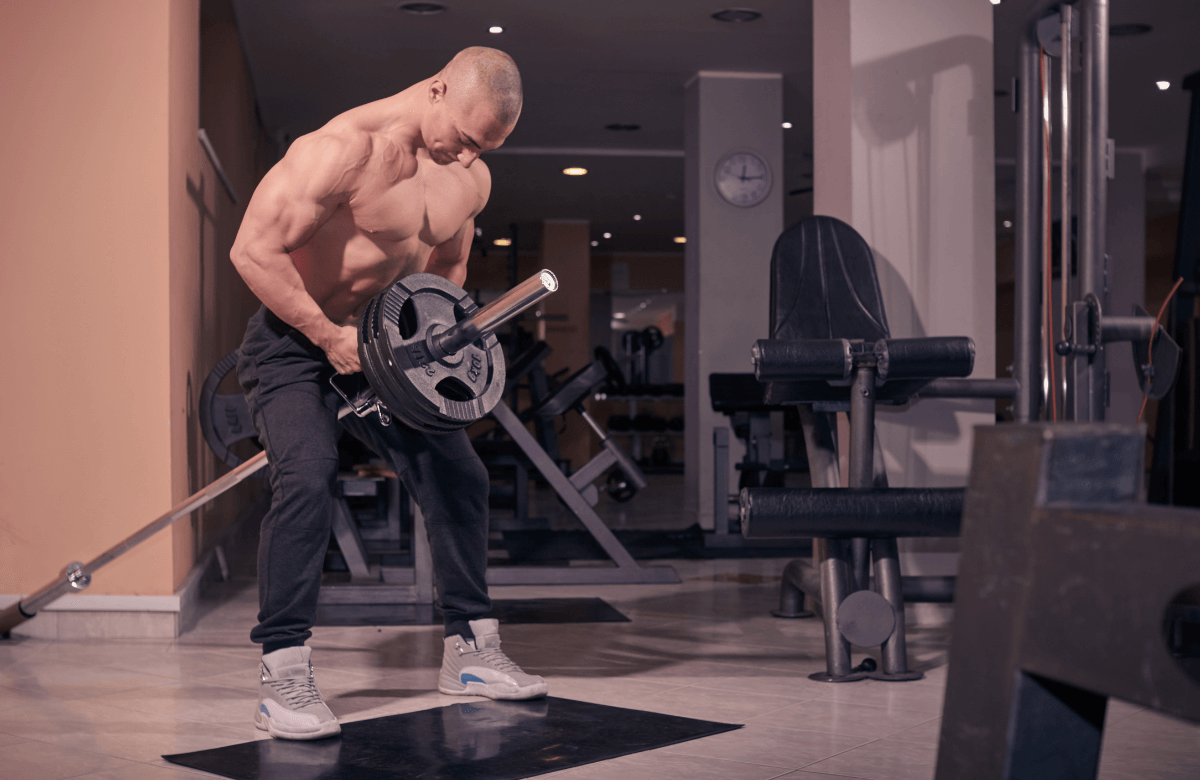Having a wide and muscular back is one of the goals for almost all fitness enthusiasts. It makes you look and feel good with or without clothes. Many exercises can help you build that massive back, but few are as effective as the T-Bar rows.
This article includes all you need to know about T-Bar rows: benefits, muscles worked, form, and common mistakes. Whether you’re a beginner or an advanced lifter, T-Bar rows should be included in your training routine.
We also included a few alternatives to the movement in case you can’t access a barbell or the special t-shaped attachment.
With nothing more to add, let’s dive in!
Jump to:
What Are T-Bar Rows?
The T-Bar row is a pulling upper body movement involving a weighted barbell with a T-shaped attachment. Different attachments give this exercise a wide range of purposes. Some use a narrow grip, others are wider, while others allow a neutral grip position, underhand grip, and a pronated grip.
Although this exercise mainly focuses on strengthening the back (lat) muscles, it also targets other back muscles (see below) that improve the overall upper body stability, especially the shoulder joints.
This movement should be a part of most people’s training routines. It’s easy to do and load. Once you get comfortable with it, you’ll notice a significant difference in your muscle growth.
T-Bar Row: Form & Technique
The best way to ensure a long and healthy fitness journey is to learn the movements with the correct and appropriate form. This will minimize your injury risk and enlarge your muscle gains.
The technique for the T-Bar row will vary depending on the setup. If you do it on the chest-supported T-Bar machine, load the barbell and get on the device with your chest against the pad. Grab the bar by the handles and un-rack it. Start with your arms straight and pull the bar towards your chest while keeping a neutral neck.

A benefit of using a chest-supported machine is that it takes the load off your back so that you can bias the lats more and be safer. However, not all gyms have this machine row, which brings alternatives to the mix.
The most common way of doing T-Bar rows without a machine is using a barbell anchored on the floor or against a corner wall to ensure stability. Then attach the T-shaped handle (or any other) to the barbell and load it with the desired weight.
Once you’ve done this, grip the handle and lift the bar off the floor, maintaining a bent-over position with your hips hinged. Ensure your neck and back remain neutral (no overarching or humping). This will be your starting position and the main differentiator between a chest-supported machine and a machine-less variation.
From here, pull the bar towards your chest using nothing but your arms and avoid using momentum from your back and legs. Before increasing the weight, double down on the proper form and technique to keep injuries to a minimum and make the most out of the movement.
Muscles Worked
The barbell-based T-Bar row is considered a compound exercise because it targets several muscles per rep. This is one of the qualities that makes it a significant muscle-building variation for all fitness enthusiasts.
Lats

Their primary function is to rotate the humerus (arm bone) internally and to extend the arm (bringing it down and back.) These two actions are responsible for almost all pulling activities like pull-ups, T-Bar, dumbbell rowing, etc.
Rhomboids
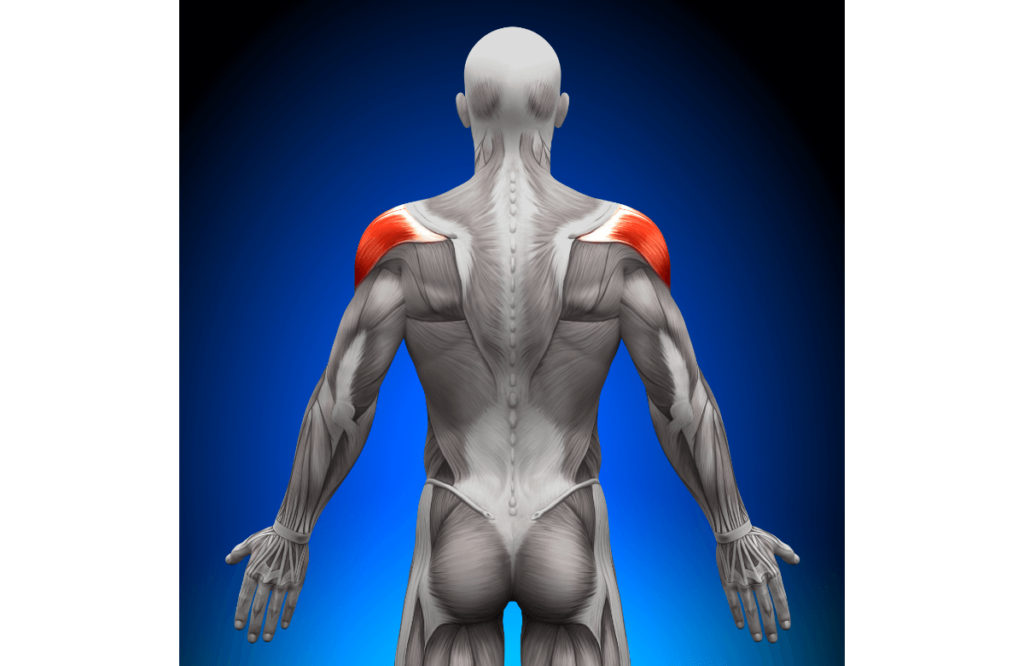
There are two rhomboid muscles: major and minor. Located in the back between your scapula and spine, they both play a crucial role in retracting, elevating, and rotating the scapula. These are vital functions needed to create a safer and stronger shoulder joint.
Rear Delts

Deltoids are the shoulders muscles. They have three portions: anterior, medial, and rear (posterior) delts. The latter is in charge of keeping your shoulder blades back, limiting hunching, and reducing stress on the front of the shoulder, where most injuries occur.
A wide grip on the T-Bar row handle will bias the movement to target these muscles more.
Traps
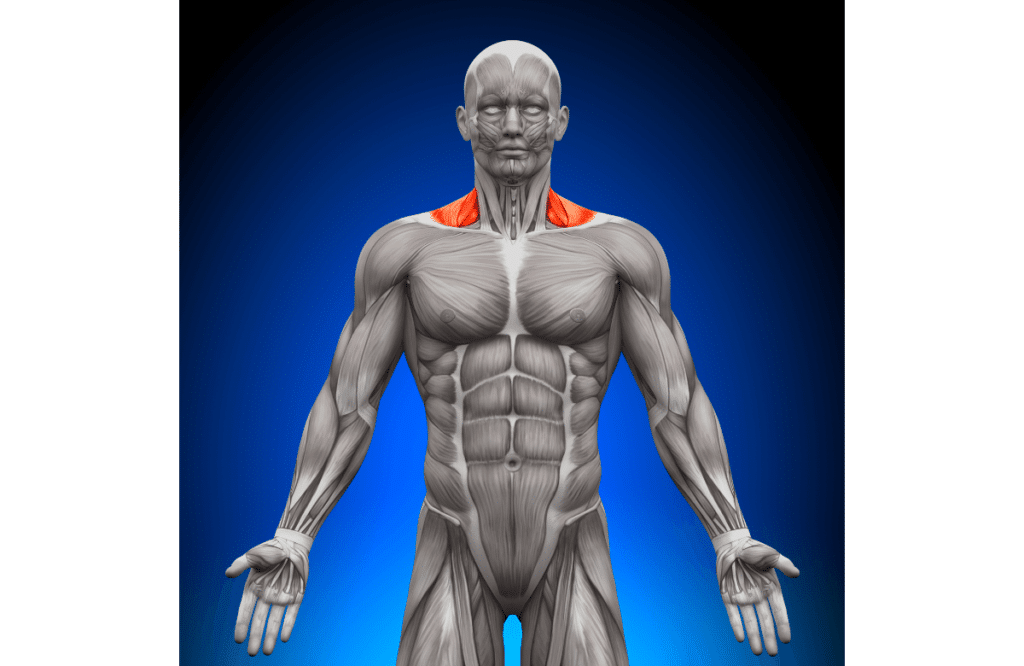
The trapezius has three portions: upper, middle, and lower traps. They are one of the most critical muscles in the back, extending from the base of the skull to the mid portion of the spine.
The function of the traps is to stabilize and move the scapula. The upper fibers can elevate the scapula and extend the neck. The middle traps medially retract the scapula, and the lower traps depress and aid the upper fibers in upwardly rotating the scapula (1)
Erector Spinae (low back)
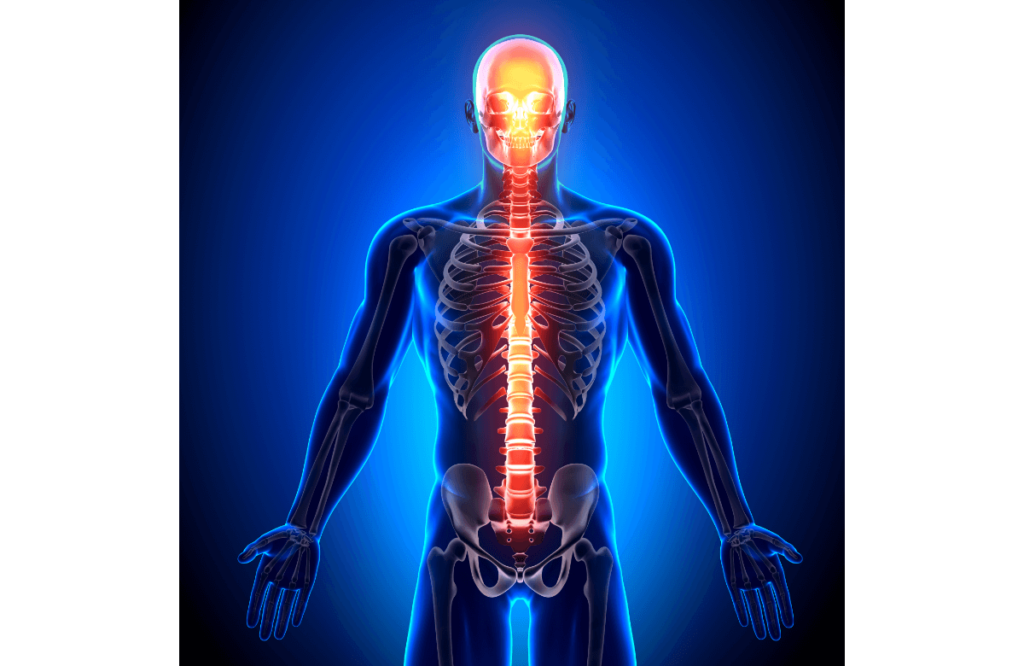
The erector spinae is one of the longest muscles in the back of your body. They are two and mainly in charge of controlling the flexion and extension of the thorax.
The T-Bar row targets these muscles to keep the torso in a hinged position to execute the movement correctly. Unless you’re doing the chest-supported T-Bar row that takes away this stimulus, get ready to experience a good and healthy backburn.
Biceps & Forearms
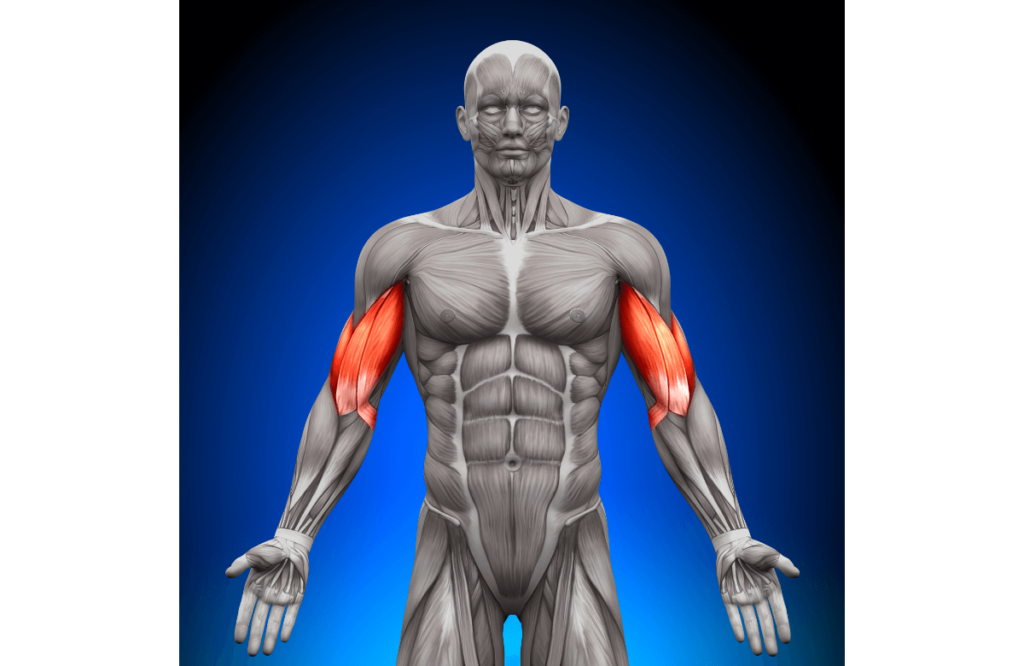
The biceps and forearms play a significant role in gripping and bringing the bar closer to your body during the rowing action. Many individuals will see their rowing potential limited by their biceps and forearm strength and endurance.
It doesn’t matter how much you can row; if your biceps and forearms are not up to par, you could leave gains on the table. On the bright side, continuously doing T-Bar rows will improve your biceps and grip strength.
T-Bar Row: Benefits
The T-Bar row has several benefits, but three stand out:
– Easy to learn
– Builds a strong back
– Hits multiple muscles per rep.
These alone should make this exercise a no-brainer to include in any training program, whether you are a beginner or an advanced lifter.
Easy To Learn
The easier the movement, the more chances any individual has to stick with it the longest. In other terms, simplicity is a friend of consistency. T-Bar rows are a very intuitive movement. Once you get into the starting position, everything else follows smoothly.
This quality makes it a great option not only for advanced lifters but also for beginners. Even if you don’t have a T-bar machine or a T-Bar row attachment, hitting those upper back muscles remains an effective exercise.
If you’re starting, double down on proper form before increasing the load, and you’ll notice the results in no time.
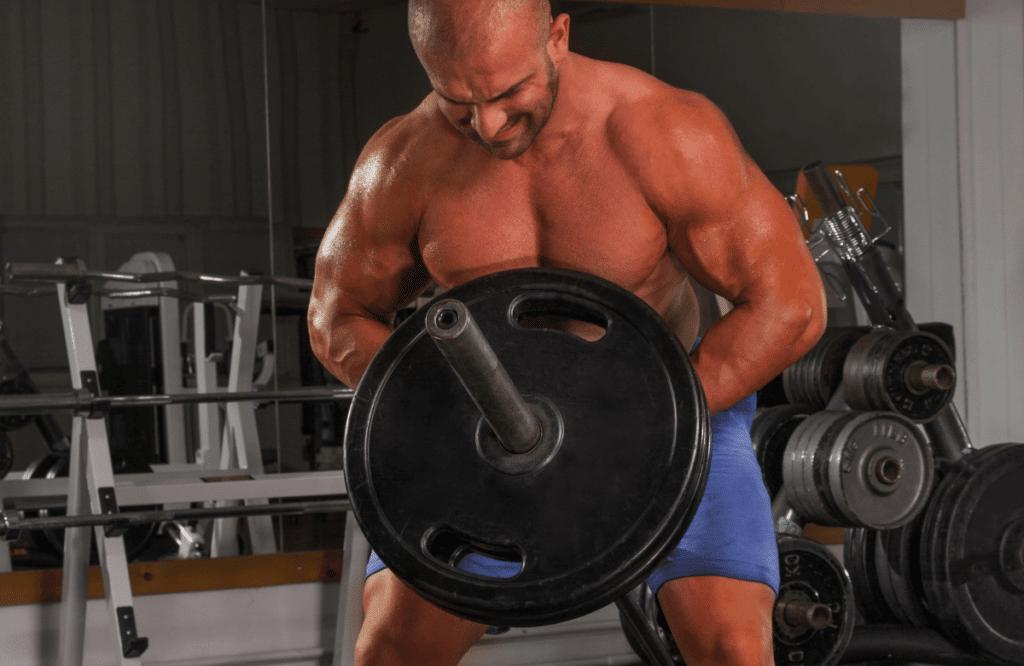
Builds Strong Back
T-Bar rows are known to be a back-building exercise. This movement will hit the entire posterior chain like no other rowing variations. The bent-over position focuses on not only the lats but also the core muscles.
Even if you don’t have a T-Bar row machine, this exercise will expose your primary muscles to a significant time under tension, taking your training program to the next level.
Hits Multiple Muscles Per Rep
Although the main focus of the T-Bar row is to develop a stronger and bigger back, it also targets multiple muscles per rep, such as:
– Traps
– Biceps
This ability adds more value to the exercise, making it a no-brainer for all gym enthusiasts to try. In other words, the T-Bar row is more a compound exercise than an isolation exercise. It has a greater muscle activation than other alternatives, like the dumbbell rows, which is something to consider when looking for variations.
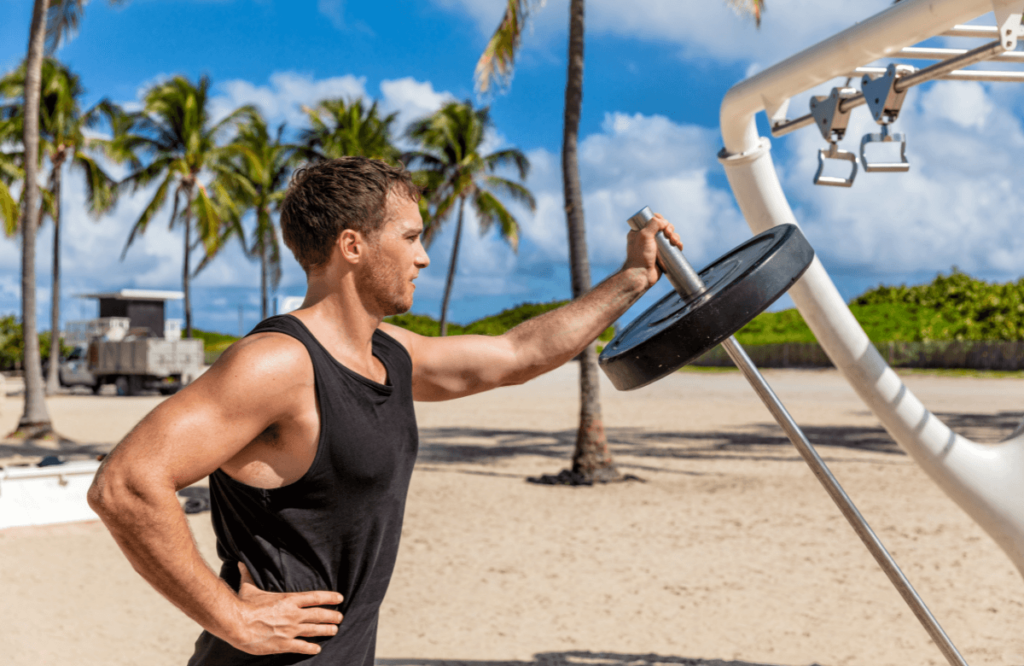
T-Bar Row: Common Mistakes
The T-bar row is a movement that relies heavily on the position and stability of your back and core. Being able to control that midsection of your body will be crucial to maximizing the benefits of it.
Rounded Back
The common mistake people make when performing T-bar rows is losing the spine’s neutral position and adopting a rounded back. There are many factors involved in this;
– Too much weight
– Lack of postural strength
– Poor mind-muscle connection
Regardless of the reason, the main focus for any lifter attempting this exercise should be to avoid a rounded back since it could increase injury risk and take away the many benefits this movement can bring to your upper body strength.
To fix this mistake, consider bringing your shoulder blades back together and sticking your chest out while keeping a neutral neck. This will ensure a more stable and strong spine.
Too Much Weight
A frequent phenomenon among gym enthusiasts is “ego lifting.” This term refers to individuals lifting more weight than they can handle to impress others.
This puts in jeopardy not only the exercise’s integrity but also the individual’s health. Although it is recommended to continuously push the pace in terms of strength, finding the right balance between weight and form will be crucial to keep you healthy long-term.
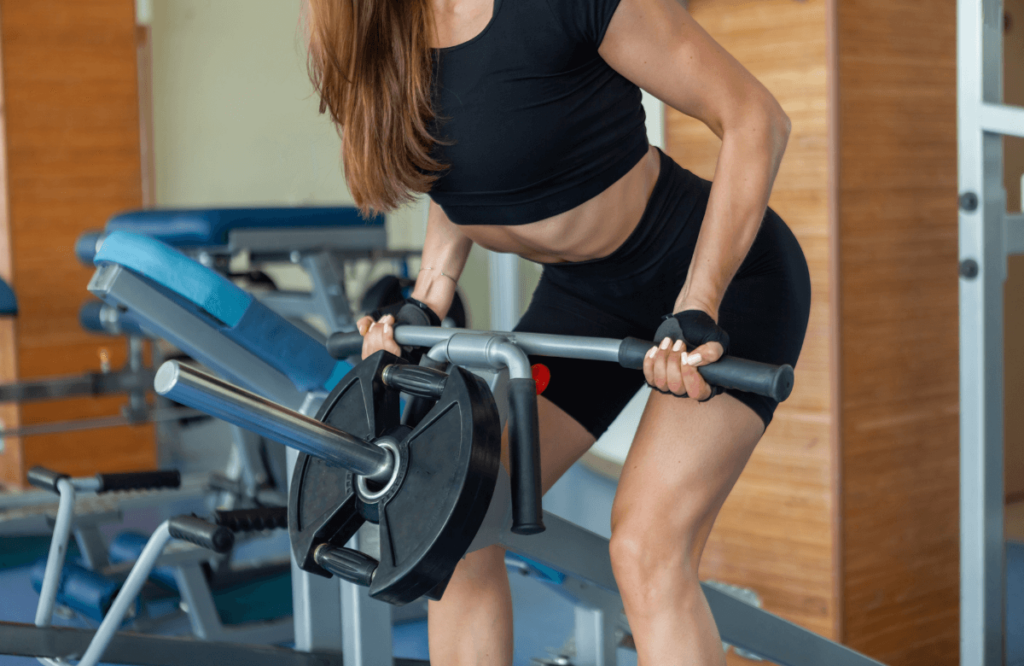
Best T-Bar Row Alternatives
T-Bar rows are a terrific exercise for most people. However, only some have the facility or the tools to execute the movement correctly. For those cases, having alternatives is the best way to keep on track with your progress.
Bent-Over Barbell Row
The bent-over barbell row is the alternative that emulates the T-Bar row the best. It has the same starting position and almost identical movement pattern.
The barbell row is easier in terms of setup because it doesn’t require any unique handle or barbell attachment other than the barbell itself. The grip for this movement can be pronated (overhand), supinated (underhand), mixed, or hook grip.
Contrary to the T-Bar row, this movement is less comfortable to load heavily due to the weight distribution being mostly placed on the lower back muscles. Although more advanced lifters may be able to handle the stress, for most individuals it may not be ideal.
Regardless, this is a terrific alternative that anyone can do basically anywhere.
One-Arm Dumbbell Row
There’s no list of rowing exercise alternatives without including the dumbbell row. This movement has been the cornerstone for massive back gains since the beginning.
The one-arm dumbbell row is simple in its execution and setup. You only need a dumbbell (or kettlebell) and a surface to support you (usually a bench.) Although this variation doesn’t use a barbell, it does enable multiple grips and arm paths that other alternatives can’t.
This exercise is also more beginner friendly than others because it doesn’t require much stabilization from the core. Assuming you already have a bench to support your lower body and non-lifting arm, begin the rowing by taking the dumbbell to your hips while maintaining a neutral back and neck.
One highlight of this movement is that it has a lower injury risk than the bent-over and T-Bar row variations because the lower body is stabilized.
Barbell Landmine Row
Regarding the pulling and arm path, the barbell landmine row is the most accurate alternative to the T-Bar row. You can set up the barbell against any corner, load it with weight plates, get into the starting position, and start the movement.
This variation is expected in regular gyms since not all facilities have the specific T-Bar attachments and setup. However, with the landmine attachment, you can use a neutral grip, overhand grip, underhand, and all kinds of grips to get the most out of this variation.
Frequently Asked Questions
Is The T-Bar Row Better Than The Barbell?
The T-Bar row is a complete exercise compared to the barbell row because it allows the body to take away stimulus from the biceps and focus more on the back muscles. However, this doesn’t make it a better movement than the barbell row. It all boils down to preference and personal goals.
What Does T-Bar Rows Work?
T-Bar rows primarily work the lats and rear delts. It’s a pulling upper-body exercise that focuses on the muscles from the back of your body. Other secondary muscles worked are traps, rhomboids, and biceps.
Should You Go Heavy On T-Bar Rows?
If your form and experience allow it, you should focus on T-Bar rows. T-Bar rows are one of the few movements where going heavy is advised. This movement places the body in an advantageous position, allowing it to move heavy weights safely.



